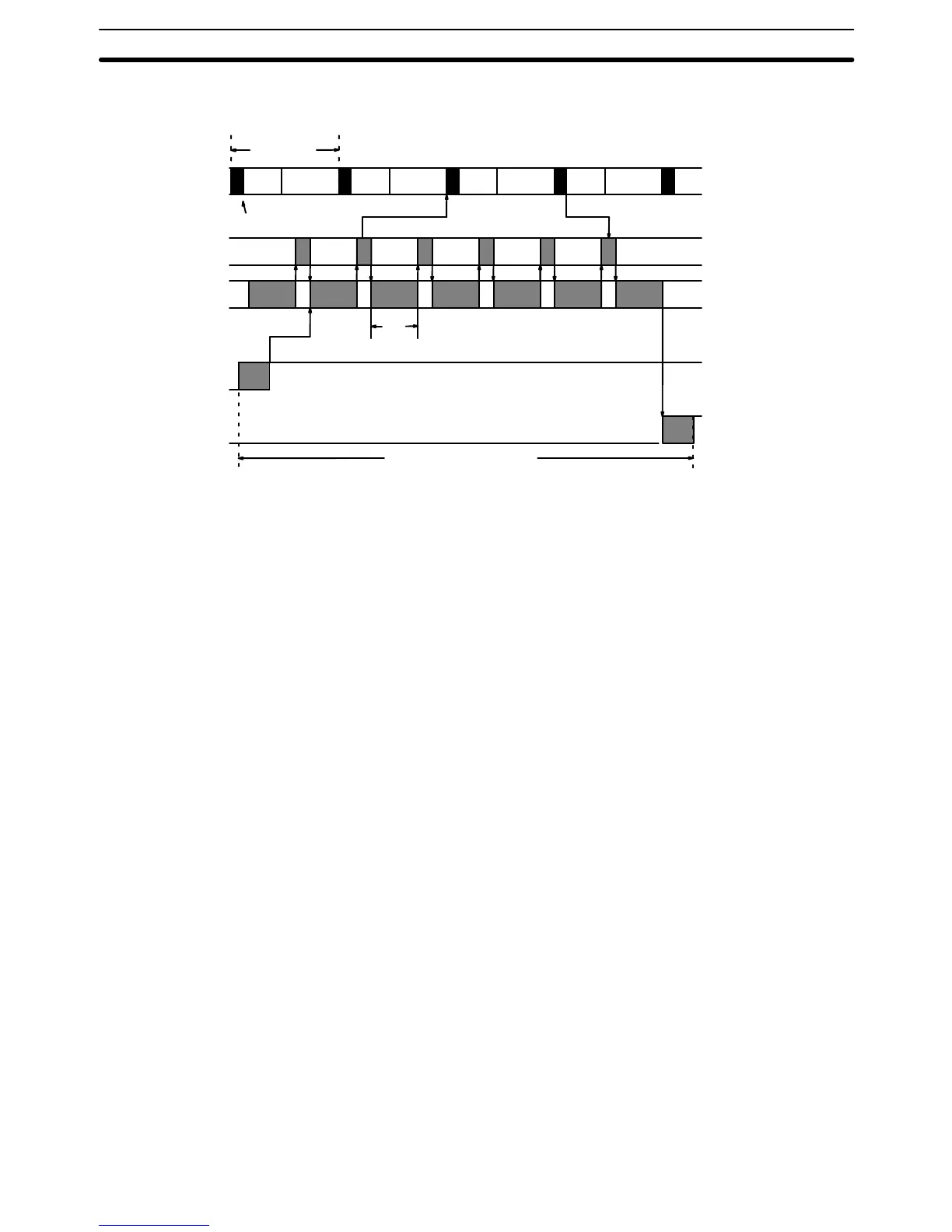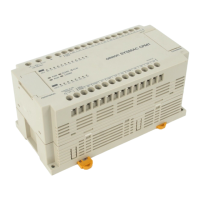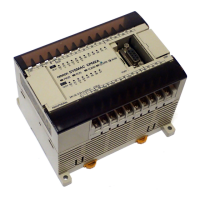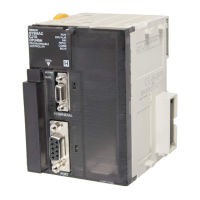490
The PC takes longest to respond when the Master receives the input signal just
after I/O refreshing. This situation is illustrated below.
Input signal
Output signal
Cycle
Cycle time
I/O refresh
I/O response time
Output ON delay
Input ON delay
Buffer in Master
Transmission time
T
RM
AB AB AB AB
A: Program execution
B: Peripheral servicing
Maximum I/O response time = input ON delay + cycle time x 2
+ Master transmission time x 2 + Slave transmission time x 2
+ output ON delay
Maximum I/O response time = 1.5 + (20×2) +(8.2×2) +(2.2×2) +15 = 77.3 ms
6-5-4 Asynchronous Operation with a SYSMAC BUS/2 System
Here, we’ll compute the minimum and maximum I/O response times for a
CV1000 that is set for asynchronous operation and controls a SYSMAC BUS/2
System. Both the input and output are on I/O Units connected to Slave Racks. In
asynchronous operation, SYSMAC BUS/2 refreshing occurs at the end of the
SYSMAC BUS/2 communications cycle.
This calculation only applies when the SYSMAC BUS/2 Master is the only CPU
Bus Unit connected to the CPU. If other CPU Bus Units are connected, add the
following delay to the maximum I/O response time calculated later in this sec-
tion: (other Unit’s refreshing time +1.5 ms)×(number of CPU Bus Units con-
nected)
If a higher priority peripheral process such as a SEND(192), RECV(193), or
FAL(006) instruction occurs, it will be processed before the SYSMAC BUS/2
servicing, increasing the I/O response time.
Maximum I/O Response
Time
I/O Response Time Section 6-5

